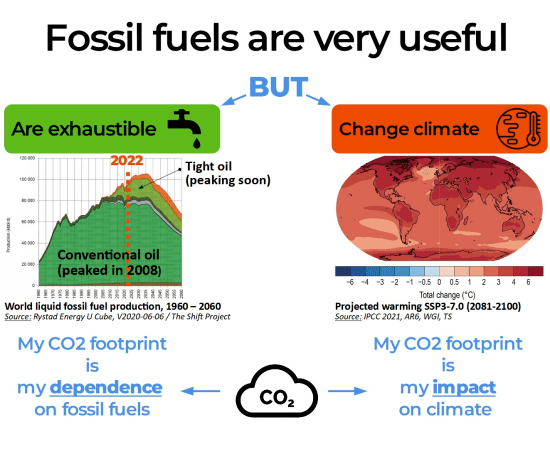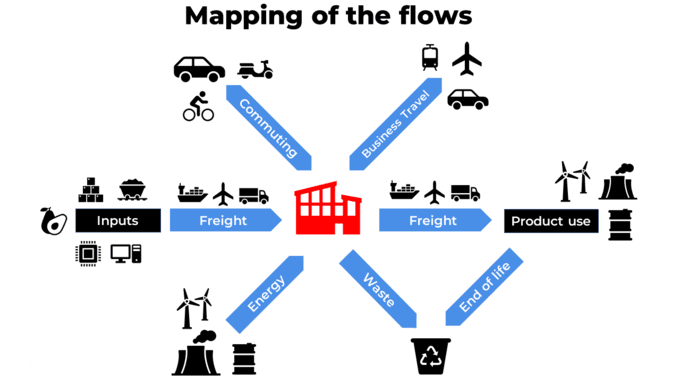Carbon management at the corporate level
Corporate carbon footprint: it is not only about climate!

We are facing a carbon crisis from two sides.
While global awareness towards the climate emergency is rising, companies are concerned about their corporate carbon footprint with respect to climate policies. These include carbon pricing and taxes, carbon neutrality and net zero pledges, and corporate image.
But more essentially, setting-up a corporate carbon footprint is vital to understanding one’s dependence on fossil fuels and vulnerability with respect to fossil fuel depletion.
The less you emit, the lower your dependence on fossil fuels and the more prepared you are for a low carbon future. It’s as simple as that.
Setting-up your carbon footprint is the first step in identifying the most significant sources of emissions from your activities in order to efficiently target emissions reduction.
What is included in a corporate carbon footprint?
In order to properly asses your carbon footprint you have to map the global flows of your material and energy consumption.
1) This starts with the direct emissions from your facilities in the form of fossil fuels burned in e.g. furnaces or company vehicles. This is commonly referred to as Scope 1 emissions1.
2) In the next step, you consider the indirect emissions caused specifically by the generation of the energy you consume (electricity, heat, steam). This is referred to as Scope 2 emissions2.
3) Finally you consider indirect emissions on which your business is dependent. These are the emissions involved in:
- The manufacturing of all inputs such as raw materials & spare parts, IT devices and services, office goods, production machinery, capital goods
- Commuting and business travel
- Upstream and downstream transportation (freight)
- Products use and disposal
- The disposal of generated waste.
This is referred to as Scope 3 emissions1.
1according to the international standards ISO 14064-1 and Greenhouse Gas Protocol (GHG Protocol).

That sounds challenging!
It’s easier than you think.
The main challenge is to define the proper boundaries for your activity and to gather all relevant data. Then the calculation is easy.
While most scope 1 and scope 2 data are easily found on your bills (fuels, electricity, and heating), some scope 3 data can be more challenging to gather. For example, these data include km flown for business travel or km driven by commuting employees.
Therefore, it is important to develop an internal “carbon culture” within the company in order to simplify data gathering and improve data quality over time.
